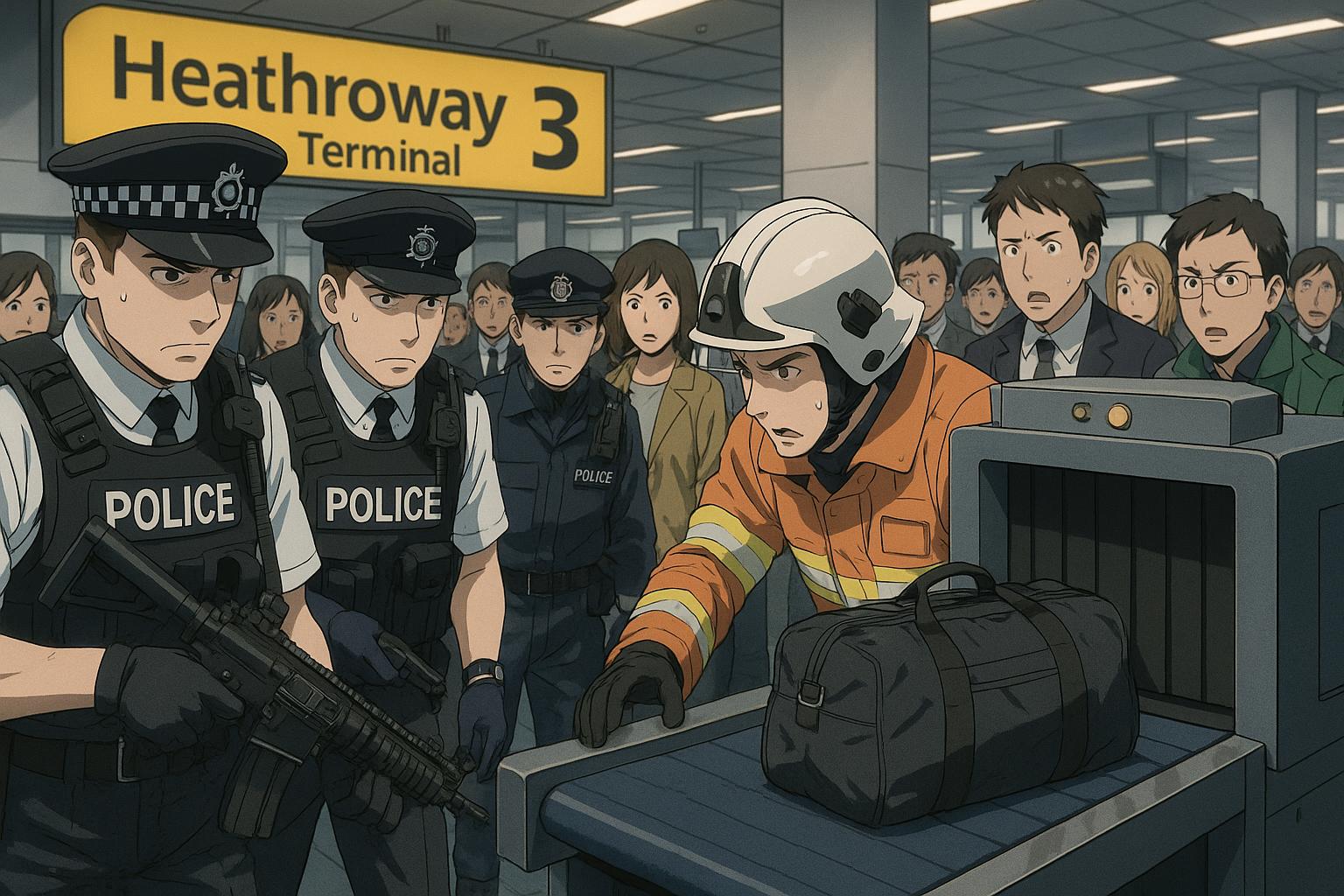Thousands of passengers at London Heathrow Airport faced potential travel chaos after Terminal 3 was evacuated due to reports of a suspicious item discovered in a passenger's baggage. The incident prompted immediate police and emergency services response, drawing attention to ongoing concerns surrounding airport security and passenger safety.
As the heart of operations for several major airlines, including Virgin Atlantic, Delta, Emirates, and Cathay Pacific, Terminal 3 typically buzzes with activity, especially during peak travel times in the afternoon. The nature of the suspicious item, however, remains unclear; it was either flagged during a security search or found in the arrivals area. A spokesperson for Heathrow stated, “This afternoon, our teams responded to a potentially suspicious article in Terminal 3. As a precaution, a small part of Terminal 3 was temporarily evacuated while the authorities conducted the appropriate checks. The issue has now been safely resolved.” They apologised for any disruption experienced by travellers.
Alongside the terminal's evacuation, services on the Heathrow Express and the Elizabeth Line, both of which run beneath Terminal 3, were significantly affected. Reports indicated that over 20 trains were cancelled, though some cancellations were already in place due to a prior rail defect. Fortunately, the adjacent Heathrow Central station on the Piccadilly Line remained operational and unaffected.
This incident echoes a similar occurrence in November 2024, when Gatwick Airport's South Terminal was closed following the discovery of a suspicious item. That situation led to extensive delays for thousands of passengers, although later it was clarified that the traveller and their item were permitted to continue their journey. Such events highlight the fine balance airports must maintain between ensuring security and minimising inconvenience to passengers. Under current regulations, airlines are obliged to provide alternative travel arrangements or accommodations in the event of significant disruptions such as a bomb scare.
Heathrow maintains a history of prioritising security. Prior incidents have tested this, such as the evacuation of Terminal 4 in September 2023 after the discovery of a suspicious package, which on that occasion also involved armed police and led to temporary disruptions. Similarly, in March 2019, the airport dealt with three suspicious packages across major transportation hubs, which ultimately were linked to a larger investigation involving improvised explosive devices. Authorities responded swiftly, indicative of their commitment to rigorous safety measures at a critical global transport nexus.
As threats continue to evolve, and with recent breakthroughs in surveillance and threat detection, security officials remain on high alert. Passengers are routinely reminded to stay attuned to updates from their airlines during such incidents. This vigilance not only reassures the public but also plays a pivotal role in overall safety strategies at major airports like Heathrow.
Notably, past experiences like the decorative grenade incident in January 2021, which led to the evacuation of Terminal 2, further stress the importance of compliance with security protocols at airports. The swift police intervention in that case emphasised the need for all travellers to be mindful of airport regulations, ensuring public safety remains paramount.
As this latest incident unfolds, passengers and authorities alike will continue to navigate the complex landscape of airport security, where the balance between thorough checks and seamless travel experiences is critical.
Reference Map:
- Paragraph 1 – [1], [3]
- Paragraph 2 – [1], [4], [2]
- Paragraph 3 – [1], [5]
- Paragraph 4 – [2], [3]
- Paragraph 5 – [6], [7]
Source: Noah Wire Services
